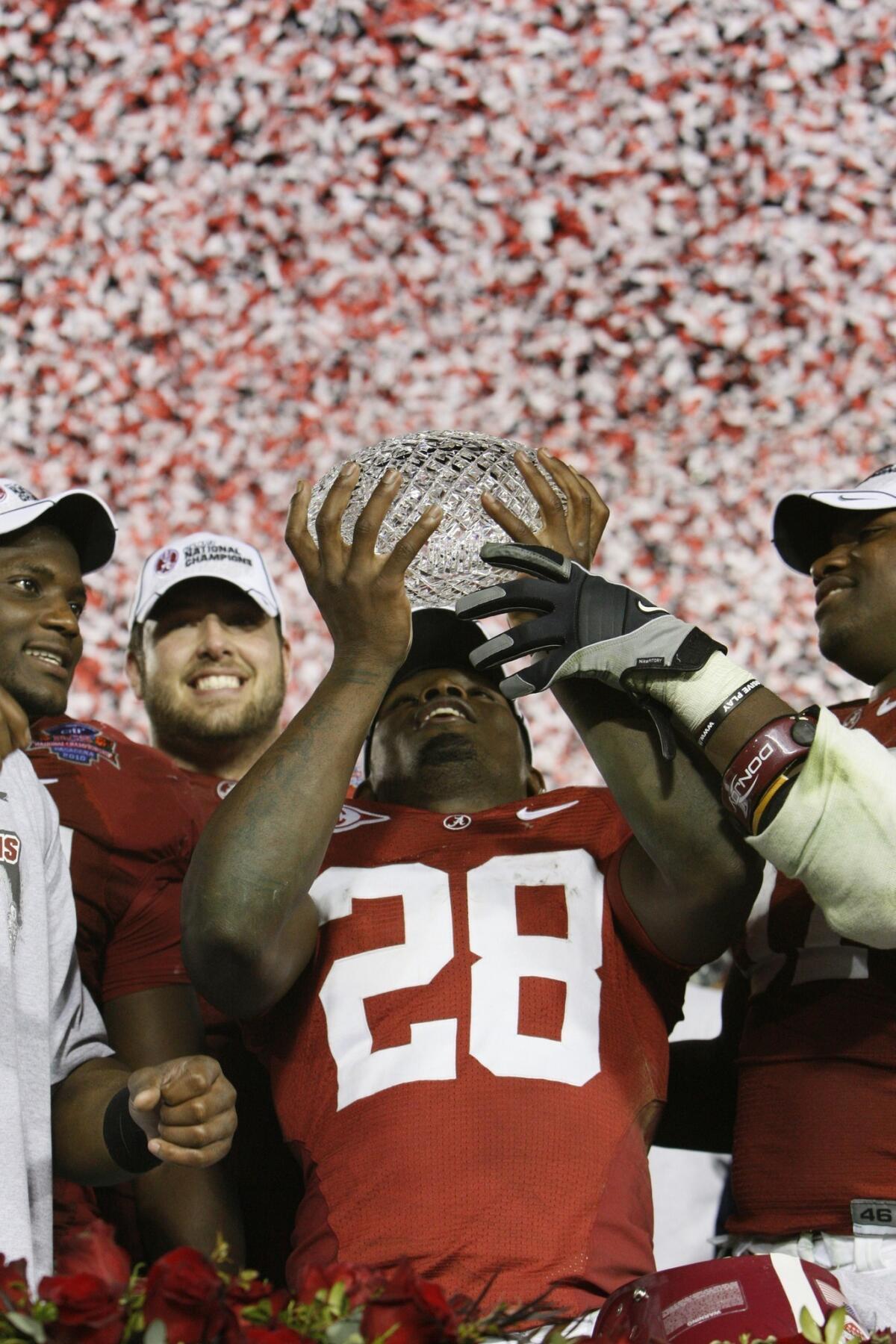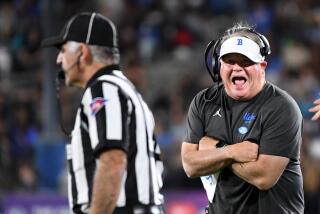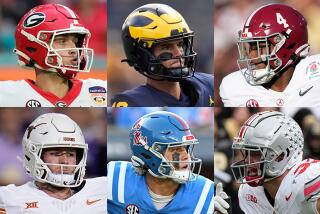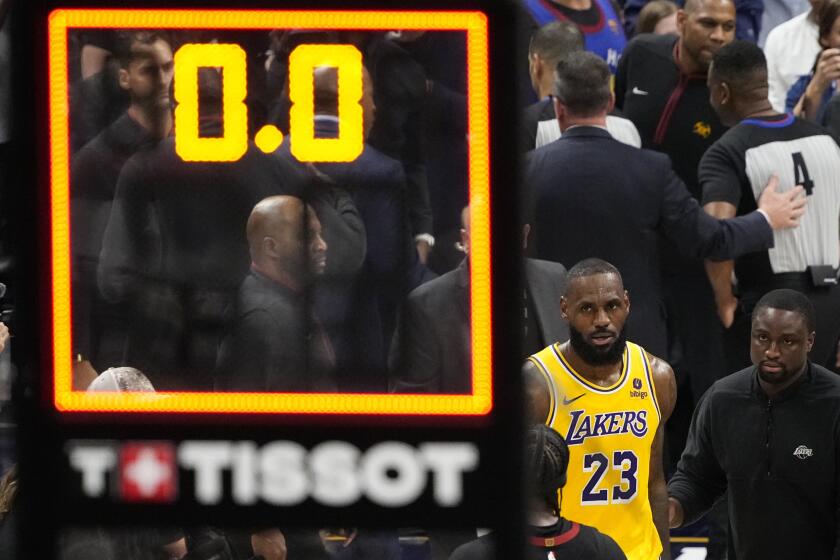Goodbye Bowl Championship Series standings, we hardly knew ye

Sunday night I was emailed the last Bowl Championship Series standings ever assembled.
I didn’t cry, but I sniffled.
The standings were compiled and delivered, seven Sundays a season, by the National Football Foundation. You could click the short-form or long-form version, but it was always long-form for me because I wanted to soak up every nutty nuance of the standings. In the old days, one of the categories that helped pick the finalists was called “Quartile Rank.”
Tennessee finished No. 1 the first year, 1998, with a quartile rank of 0.80, yet I don’t remember Volunteers students printing T-shirts celebrating “We’re No. 0.80!”
The quartile was ditched after one season and replaced by something called “Schedule Rank,” which sounded less NASA-like and was different from the category “Schedule Strength.”
There were only three computer indexes in the beginning: Jeff Sagarin, Seattle Times and New York Times.
The BCS was such a fixer-upper it added five more computers in 1999 before finally settling on the present six.
The New York Times got out in 2004 after concluding the BCS was apparently not fit to print. Some computer operators left because BCS commissioners demanded they remove margin of victory from their formulas.
Sagarin, an early BCS stakes holder, stayed on but started putting out two sets of numbers: his own and a separate ranking for the BCS. That led to a head-scratching point this year where Sagarin had Northern Illinois at No. 37 in his regular rankings but No. 3 in his BCS index.
Huh? In 16 years, I said “huh?” a lot.
I won’t miss the BCS as much as I will miss the BCS standings, if only for the sheer audaciousness of the endeavor. I will miss the conundrums it caused and the hackles it raised. The BCS exposed biases in humans pollsters we all knew were there.
It wasn’t always fair, but it was almost always funny.
Next year, a 13-member panel will choose the top four teams and also place other major schools in the major bowls.
It’s about time we got something better in college football — but how boring is that?
We won’t have terms like “non-automatic qualifier” to kick around anymore. As in, “A school from a non-AQ conference will qualify for a major bowl if it finishes in the top 12 of the final BCS standings, or in the top 15 ahead of an AQ conference champion.”
The BCS produced some of the most convoluted, high-choleric sentences in journalism.
Never again can it be written that Notre Dame will receive an automatic BCS bid if it finishes in the top eight just because it is Notre Dame. Never again will a top BCS official answer a reporter’s question with “That can’t happen … can it?”
The question in 2003 was whether USC could finish No. 1 in both BCS polls and not make the title game. And it did happen.
The new College Football Playoff has promised the selection committee will release four rankings per season, three fewer than the BCS. Those standings promise to be drier than toast.
We are losing genuine weekly buzz to a new system that wants to produce a “truer” champion in college football.
That might be all right for you, but what about me?
What I’ll miss most about the standings is the Monday after Selection Sunday, when the coaches’ final ballots are published over a full page in USA Today.
For years, the coaches operated in darkness, leaving us to only suspect there were voting shenanigans going on. The release of the votes removed all doubt.
Coaches were forced to reveal their final votes in the aftermath of the BCS scandal of 2004, when enough votes suspiciously tipped Texas’ way to put the Longhorns in the Rose Bowl instead of California.
Luckily for us, transparency in the polls did not stop our favorite coaches from revealing their jealousies, shamelessness and cluelessness.
New Mexico State Coach Hal Mumme, in 2007, voted Hawaii No. 1 on his final ballot.
Florida State Coach Bobby Bowden always seemed to vote his son’s team higher in the polls. The Stoops’ brothers, Bob and Mike, also stuck together.
The coaches did not hold anything back in their final final vote on Monday.
Arkansas Coach Bret Bielema had Ohio State No. 12 after the Buckeyes suffered their first defeat in a hard-fought game last Saturday against Michigan State.
While most coaches dropped Ohio State down to the five, six or seven rung, Bielema knocked Urban Meyer’s team to the brink of BCS bowl eligibility.
What possibly could have been his motive? Well, as Wisconsin’s coach, Bielema publicly waged war with Meyer over recruiting tactics. Monday’s vote may have been Bielema’s payback.
And what about Oklahoma State Coach Mike Gundy?
Oklahoma’s win over Oklahoma State in the annual Bedlam game cost Gundy’s team the Big 12 Conference title.
Both teams finished 10-2, yet Gundy still ranked his team at No. 10, two spots ahead of Oklahoma. Oklahoma, No. 17 in the BCS last week, needed to finish in the top 14 to be BCS eligible and earn a trip to the Sugar Bowl.
Some votes were just odd: Utah Coach Kyle Whittingham also had Oklahoma State ahead of Oklahoma. And Alabama’s Nick Saban voted Stanford No. 9. Maybe Saban thought it unforgivable Stanford should ever lose to a program at Utah’s level.
At least the coaches, on their last attempt, put Central Florida ahead of Louisville after realizing UCF beat Louisville and won the American Athletic Conference, and UCF will be playing in the Fiesta Bowl.
How could you not miss these guys?
More to Read
Get our high school sports newsletter
Prep Rally is devoted to the SoCal high school sports experience, bringing you scores, stories and a behind-the-scenes look at what makes prep sports so popular.
You may occasionally receive promotional content from the Los Angeles Times.







